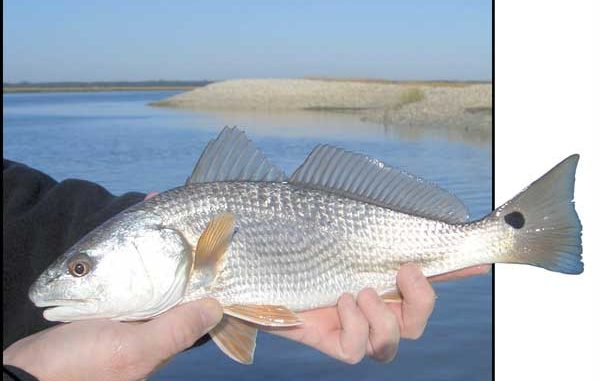
If you’ve been living along the coast for the past few decades, you have been witness to the steady, incoming current that is bringing more people, more boats and loads more fishing pressure.
With the Internet, people can post pictures of fish they have caught, and others see those images and become inspired to chase the same fish. More, more, more cannot be good for the fishery in the long run — so let’s aspire to practice proper handling of redfish when releasing them.
If you haven’t been fishing lately, the red drum — aka redfish, spot-tailed bass, and channel bass — has become the most sought-after fish on the South Carolina coast. Scienops ocellatus can be caught year-round, so the fishing pressure is constant. More anglers translates into more fishing guides with the knowledge and ability to tally impressive catches.
When I mention fishing pressure, it’s boat after boat fishing in a productive spot on the same day, one right after another, and they will either spook all the fish from that spot or overharvest the fish in that area. Even when well-meaning anglers release fish, the rough treatment from J-hooks and the improper handling sometimes leads to that fish’s mortality somewhere down the road.
As an experienced tag-and-release fisherman involved with the SCDNR tagging program since 1993, I have seen fish that looked perfectly fine upon release — only to find them belly-up later. A beautiful redfish released to fight another day has the angler’s blessings when he departs, and while plenty hearty, they are not indestructible. They are a living part of our natural resources that can be subjected to high water temperature, drought, predation and a whole host of taxing conditions.
Guides tell me on a regular basis they see large red drum that have perished because they were horsed up from deeper water, held out of the water while pictures are made, then thrust back into the water without proper reviving (when necessary) and without thought given to the fish’s air bladder. There is no substitute for experience on the release of these breeding-sized fish, but all too often, we have brand-new anglers eager to copy what they have seen online.
The slot limit for keeping redfish is 15 to 23 inches, with a 3-fish daily creel limit. It seems that the slot limit has changed more over the past few years than the Atlanta Braves’ pitching rotation. Fishing fans, whether they like the South’s hometown baseball team or not, are pulling for redfish numbers to stabilize. Like the Braves’ win-loss totals, redfish numbers tend to fluctuate enough to the point that scientists, conservationists, and anglers have reason to be concerned about the fishery.
At the end of the 1990s, trammel net surveys indicated that all redfish were in a decline, and a 2-fish daily creel limit was imposed. Redfish numbers rebounded slightly, prompting fishermen and legislators to call for an increase. Scientists, ever-cautious, observed data linking the slight recovery to ample rainfall that year. Surveys from the past few years have also reported less than flourishing numbers of red drum.
Generally speaking, a 24-inch red drum has reached the age where she can spawn successfully. These fish can live up to 30 or 40 years, but can they offset the fishing pressure that will no doubt be present once again, in 2008? Hopefully so, but SCDNR does have a stocking program in place to supplement the juvenile class of redfish that are in our waters. Short-term cycles don’t reveal the overall health of the trophy fish of our estuaries.
Mother Nature is constantly at work; rivers change, salinities change, redfish stocks change and so on and so forth — a natural cycle that began long before Native Americans populated coastal areas, and began harvesting natural resources. It’s good that the SCDNR sets regulations on what anglers may keep, but the education of South Carolina sportsmen about the broader ecosystem can only help redfish down the road.
The rubber meets the road with recreational anglers, and how they treat fish that are to be released can make all the difference. Commercial harvest of redfish is dwindling, and the recent executive order by President Bush declaring gamefish status for redfish should further the message of conservation.
When handling redfish, a good place to get a grip is right in their down-turned mouth. This is a rough spot that will scratch and cut the skin on fingertips, so it’s smart to wear a glove. Most of the time, I simply remove my pocket bandana or grab a nearby towel and use that as a layer of protection. Another fine place to get a grip is the other end of the fish —where a hand can wrap around right in front of the tail.
When handling a large fish, these two grips may not offer enough support, so move the hand from the tail up and under the body of the fish to flatten him into a more natural position. Under no circumstance is it acceptable to places fingers or anything else into the gills. Gills simply cannot hold up to rough treatment or puncture. A biologist told me that even the revered Boga-grip could hurt the gills on larger fish, because when being weighed and held vertically, it causes the gills to bulge outward.
Another point I hear from both guides and scientists is that redfish are capable of fighting themselves to death when confronted with a combination of warm water and light tackle. Anglers sometimes confuse “sporting” tackle with the wrong rod and reel for the job. When fishing deeper waters, plan to use a stout rod and stronger monofilament so that fish can be reeled in before succumbing to fatigue.
Catch-and-release is the future for redfishing, and that’s a good thing.



Be the first to comment